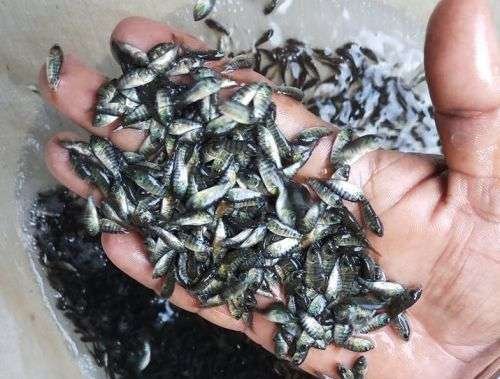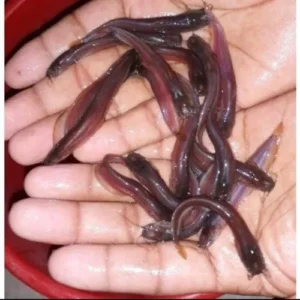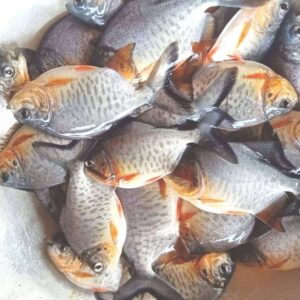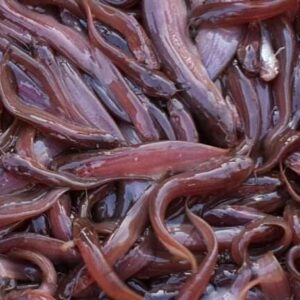Monosex Tilapia Seeds Farming: Culture, Importance, Growth Ratio, and Water Treatment
Monosex tilapia farming has become a cornerstone of modern aquaculture, offering enhanced efficiency, sustainability, and profitability. Let’s break down all the key components you’re interested in: culture, importance, growth ratio, and water treatment.
1. Culture of Monosex Tilapia Farming
Production Process
-
Monosex tilapia are produced mainly using hormonal manipulation, with methyltestosterone being the most commonly used hormone to induce male tilapia in a batch. These male tilapia are larger, grow faster, and reach market size more quickly than females, making them ideal for commercial farming.
-
Farming Techniques:
-
Hatcheries: Specialized hatcheries are used to produce monosex tilapia seeds. Eggs from female tilapia are fertilized, and in the hatchery, the larvae are fed with methyltestosterone to produce all-male fish. These fish are raised until they reach the fry or fingerling stage before they are transferred to the grow-out ponds.
-
Water Conditions: Hatcheries need to maintain high-quality water, with specific parameters to maximize the health of the larvae. These parameters are crucial for hormone effectiveness and fish development.
-
-
Rearing in Ponds or Cages: After the monosex fry have grown to a suitable size, they are moved to ponds or cages where they are grown until they reach harvest size (usually 6-9 months for market-ready tilapia). These systems should be carefully monitored for water quality, food supply, and space.
2. Importance of Monosex Tilapia Farming
Economic and Ecological Benefits:
-
Faster Growth and Higher Yield: Male tilapia grow faster and larger than females. This results in higher yields per unit of feed and shorter production cycles, making the farming process more cost-efficient.
-
Improved Feed Conversion: Male tilapia convert feed to body mass more efficiently than females. This is important because feed is one of the highest costs in aquaculture. More efficient feed conversion leads to better profits.
-
Controlled Breeding: By eliminating female tilapia, farmers can prevent unwanted reproduction. This reduces the risk of overcrowding, which can negatively affect water quality and the growth of the fish. Overpopulation can also cause more stress, leading to diseases.
-
Market Demand: Monosex tilapia meet market demand more effectively since they provide larger, meatier fish, which are preferred by consumers.
-
Sustainability: With controlled populations and optimized growth rates, monosex tilapia farming reduces the ecological footprint of aquaculture, lowering the risks of overfishing and environmental degradation.
3. Growth Ratio of Monosex Tilapia
Monosex tilapia farming is highly valued for its superior growth ratio:
-
Male tilapia growth rate: Male tilapia grow significantly faster than females. Under optimal conditions, male tilapia can reach market size (usually around 1-2 kg) in just 6 to 9 months, compared to 12 to 18 months for females.
-
Feed Conversion Ratio (FCR): The feed conversion ratio for male tilapia is typically 1.5–1.7, meaning that for every 1.5 to 1.7 kg of feed consumed, the fish will gain 1 kg of body weight. This is more efficient than female tilapia, which usually have a higher FCR, leading to higher feed costs for the same amount of growth.
-
Weight and Size: Male tilapia can grow to larger sizes. In some ideal conditions, male tilapia can reach up to 2-3 kg in less than a year, while females typically grow slower and have a maximum weight of around 1-1.5 kg.
4. Water Treatment and Management
Water quality is one of the most critical factors in monosex tilapia farming. Proper water treatment and management are essential for ensuring the health and growth of the fish.
Key Water Parameters for Tilapia Farming:
-
pH: The ideal pH range for tilapia is between 6.5 to 8.5. A pH outside this range can stress the fish and reduce growth rates.
-
Dissolved Oxygen (DO): Adequate oxygen levels are crucial. A minimum DO of 4-5 mg/L is needed for optimal growth. Low oxygen levels can lead to poor health, slower growth, and even fish mortality.
-
Ammonia and Nitrites: Ammonia (NH₃) and nitrites (NO₂) are toxic to fish, even in low concentrations. Ammonia levels should be kept below 0.5 mg/L, and nitrite levels below 0.1 mg/L.
-
Temperature: Tilapia are tropical fish and thrive in water temperatures between 26°C and 30°C (79°F to 86°F). Water that is too cold or too hot can lead to stress, disease, or even death.
Water Treatment Systems:
-
Aeration: To ensure there is enough dissolved oxygen, tilapia farms often use aeration systems. These may include air pumps, paddlewheels, or water circulation devices. Good aeration helps prevent oxygen depletion, especially in dense fish populations.
-
Filtration: Efficient filtration systems are necessary to remove solid waste and excess feed that may contribute to water pollution. This helps maintain water quality and reduces the buildup of harmful substances like ammonia and nitrites.
-
Biofiltration: The use of biofilters helps break down toxic compounds like ammonia and nitrites. These filters use beneficial bacteria to convert ammonia into less harmful substances (nitrates) that can be safely removed or utilized by plants in integrated systems (like aquaponics).
-
Water Exchange and Recirculation: In recirculating aquaculture systems (RAS), water is continuously filtered and treated, allowing the water to be reused. This reduces water waste, making it a more sustainable approach. In traditional ponds or cages, regular water exchange is necessary to maintain water quality.
-
Monitoring and Maintenance: Regular monitoring of water quality parameters, such as pH, ammonia, nitrites, oxygen levels, and temperature, is essential. Automated systems can help in monitoring these parameters in real-time, allowing for prompt interventions if conditions deteriorate.
Conclusion
Monosex tilapia farming is a highly efficient and sustainable practice that has revolutionized aquaculture, offering benefits such as faster growth, higher market value, and better feed conversion. The key to success lies in the careful manipulation of water quality, maintaining optimal growth ratios, and understanding the cultural importance of this species as a source of affordable protein for millions.
Effective water treatment practices—ranging from aeration to biofiltration and regular monitoring—are vital for maintaining healthy fish and maximizing productivity.






Reviews
There are no reviews yet.